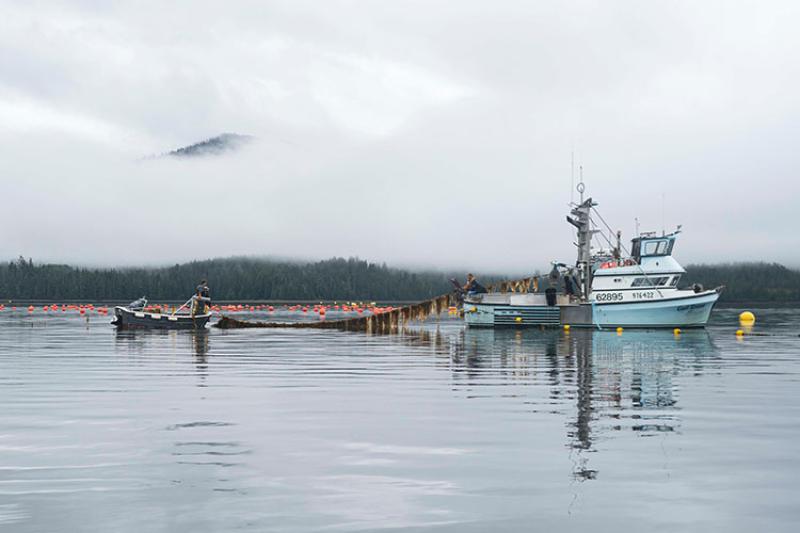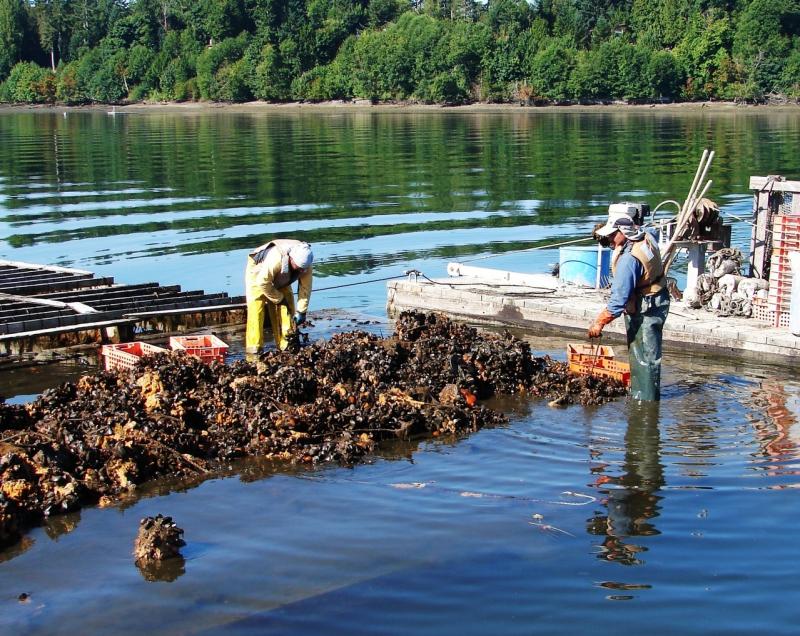NOAA Fisheries Alaska has spent the last year building its aquaculture program. Together the Alaska Regional Office and the Alaska Fisheries Science Center strive to help meet both industry and management needs to foster responsible Alaskan farmed shellfish and seaweed. We have produced a report highlighting our accomplishments, including projects and actions we’ve undertaken to support the aquaculture industry in Alaska.
Sustainable marine aquaculture — also referred to in Alaska as mariculture — helps support Alaska’s blue economy, contributing to sustainable seafood, and local economies. Seaweed and shellfish aquaculture have been shown to provide ecosystem benefits including buffering against ocean acidification, and reducing nitrogen levels in coastal environments. Aquaculture also establishes economic opportunities via the creation of jobs, eco-tourism, and other pathways.
Alaskan aquaculture has room to grow, and efforts are underway to promote and expand this sustainable industry.
“Marine aquaculture in Alaska is still pretty nascent, that gives us lots of opportunities to learn the challenges and benefits from other regions and parts of the world and craft a program that is right for Alaska, our people, and our natural resources,” said Regional Aquaculture Coordinator Alicia Bishop.
NOAA Fisheries has a multi-faceted role in aquaculture, from supporting cutting-edge science and research to federal policy-making and regulation. NOAA Fisheries Alaska Regional Office and Alaska Fisheries Science Center work closely with partners to improve and expand opportunities to foster local marine production of shellfish and seaweed in an environmentally sustainable manner. Our partners include the State of Alaska, the aquaculture industry, Alaska Native communities, and non-governmental organizations such as the Alaska Mariculture Alliance.
"A highly collaborative approach to research allows us to address pressing needs from Alaska communities to enhance the growth of mariculture while ensuring it meets the triple bottom line of environmental, economic, and social sustainability," said Mariculture and Macroalgae Lead Research Biologist Jordan Hollarsmith.
In 2020, we developed a Joint Aquaculture Action Plan to:
- Strategically align the work being done by both the regional office and science center
- Accomplish the goals of NOAA Fisheries Marine Aquaculture Strategic Plan
- Meet industry and management needs identified in the Alaska Mariculture Development Plan and NOAA Fisheries Alaska Mariculture Workshop Summary Report.
The Aquaculture Action Plan is organized around four main goals: (1) Regulatory Efficiency, (2) Tools for Sustainable Management, (3) Technology Development and Transfer, and (4) an Informed Public.
NOAA Fisheries Alaska prioritized the following focus areas in fiscal year 2021 to help us accomplish our strategic goals:
- Improve existing permitting processes for marine aquaculture in state waters
- Employ genetics to protect natural populations
- Advance the understanding of the interactions of aquaculture and the environment
- Improve production efficiency and wellbeing
- Build partnerships to increase outreach and education capacity
Project Highlights
Guided by these goals and focus areas, we took on a variety of projects and actions to support the aquaculture industry in Alaska. Some highlights include:
Celebrating Diversity
NOAA Fisheries Alaska leveraged a new funding opportunity to increase and celebrate diversity broadly across the aquaculture sector. We partnered with members from the Chilkat Indian Village and Chilkoot Indian Association. We helped develop materials and a curriculum to grow a traditionally important seaweed, Ḵ’aach’ (red ribbon algae), in a K-12 classroom in Klukwan as part of their Indigenous Science Education.
Permitting Guidance
The Alaska Regional Office and Alaska Sea Grant spearheaded a project to improve aquaculture permitting efficiency. We formed an interagency working group with state and federal aquaculture regulators to develop a permitting portal and guidance document. It supports new and existing farmers in navigating the initial application and authorization renewal, transfer, and amendment processes. Navigating the permitting processes to become an aquaculture farmer in Alaska has been identified as a barrier to development of the industry by the Mariculture Task Force, the Alaska Mariculture Workshop Summary Report, and others.
Herring Deterrent Research
A herring spawning event in 2020 destroyed the harvest of the largest commercial kelp farm in the United States. In response, we secured funding to research herring deterrents that could be used by farmers to avoid this issue in the future. Researchers are currently testing deterrents in the lab and plan to try them on farms in spring of next year.
These projects are just some of the work that the Alaska Region Aquaculture Team has accomplished over the last year. Read our full report to learn more about these projects and actions that support each of our priorities, and review updates on other notable accomplishments.
As Alaska’s marine aquaculture industry continues to grow, NOAA Fisheries Alaska Regional Office and Science Center will play an increasing role in the management, policy, and research that helps build this sustainable food source to complement the region’s wild-capture fisheries. Building off our Aquaculture Action Plan and prioritizing efforts based on our agency’s strengths, and management and industry needs, will help us focus efforts to best serve Alaska.



